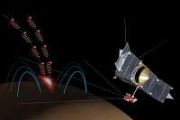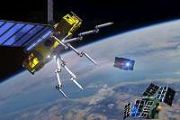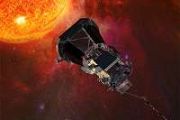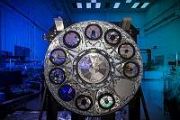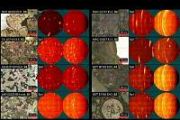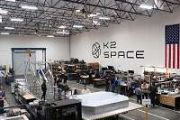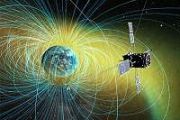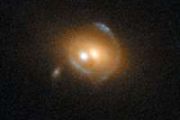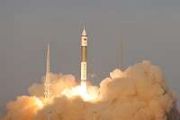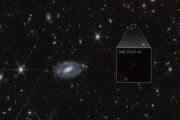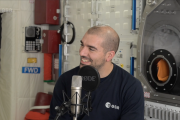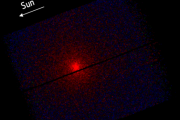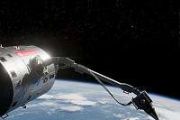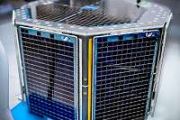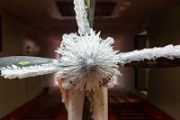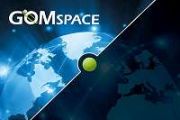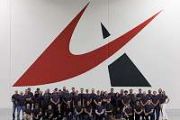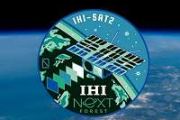
Copernical Team
Slovakia, Peru sign NASA's Artemis Accords on safe space exploration
 Slovakia and Peru on Thursday signed NASA's Artemis Accords, making them the latest in a rapid number of countries to join the U.S.-led agreement on the safe exploration of space.
Both countries signed the accords at NASA's Washington headquarters, but in separate ceremonies with Peru the first to add its name to the accords on Thursday followed by Slovakia, making them the 41st and 42n
Slovakia and Peru on Thursday signed NASA's Artemis Accords, making them the latest in a rapid number of countries to join the U.S.-led agreement on the safe exploration of space.
Both countries signed the accords at NASA's Washington headquarters, but in separate ceremonies with Peru the first to add its name to the accords on Thursday followed by Slovakia, making them the 41st and 42n Twin NASA Satellites to Measure Earth's Polar Energy Emissions
 NASA has launched the first of two shoebox-size CubeSats to help scientists understand the behavior of clouds and water vapor at Earth's polar regions and their impact on climate. The first satellite of the Polar Radiant Energy in the Far-InfraRed Experiment (PREFIRE) mission was launched from New Zealand on May 25. The second CubeSat is scheduled to launch on June 1.
The PREFIRE mission w
NASA has launched the first of two shoebox-size CubeSats to help scientists understand the behavior of clouds and water vapor at Earth's polar regions and their impact on climate. The first satellite of the Polar Radiant Energy in the Far-InfraRed Experiment (PREFIRE) mission was launched from New Zealand on May 25. The second CubeSat is scheduled to launch on June 1.
The PREFIRE mission w Scout Space's second optical payload completes first image capture in orbit
 Scout Space Inc., a leading in-space observation service provider focused on space security and comprehensive Space Domain Awareness (SDA), announced that its optical payload "Sparrow" has completed commissioning and captured its first in-space calibration image. Launched aboard the Apex Aries bus on the SpaceX Transporter-10 mission in March 2024, this marks the successful deployment of Scout's
Scout Space Inc., a leading in-space observation service provider focused on space security and comprehensive Space Domain Awareness (SDA), announced that its optical payload "Sparrow" has completed commissioning and captured its first in-space calibration image. Launched aboard the Apex Aries bus on the SpaceX Transporter-10 mission in March 2024, this marks the successful deployment of Scout's NASA provides new near real-time air quality data
 NASA has released new data offering detailed air pollution observations down to neighborhood levels. This data comes from the TEMPO (Tropospheric Emissions: Monitoring of Pollution) instrument, launched last year to enhance air quality observation from space. The data is available at NASA's Atmospheric Science Data Center in Hampton, Virginia.
"TEMPO is one of NASA's Earth observing instru
NASA has released new data offering detailed air pollution observations down to neighborhood levels. This data comes from the TEMPO (Tropospheric Emissions: Monitoring of Pollution) instrument, launched last year to enhance air quality observation from space. The data is available at NASA's Atmospheric Science Data Center in Hampton, Virginia.
"TEMPO is one of NASA's Earth observing instru FCC chair calls for stricter 'space junk' rules
 The chair of the Federal Communications Commission called on the agency to strengthen rules to "limit the risks posed by accidental explosions in space" in light of a huge influx in the number of satellites being launched and a spate of recent events in which space junk has fallen to Earth.
"We can no longer afford to launch new satellites into our skies without being thoughtful about s
The chair of the Federal Communications Commission called on the agency to strengthen rules to "limit the risks posed by accidental explosions in space" in light of a huge influx in the number of satellites being launched and a spate of recent events in which space junk has fallen to Earth.
"We can no longer afford to launch new satellites into our skies without being thoughtful about s Earth from Space: Madagascar jellyfish
 Image:
Resembling a reddish jellyfish, the Mahajamba Bay in Madagascar is imaged by Copernicus Sentinel-2.
Image:
Resembling a reddish jellyfish, the Mahajamba Bay in Madagascar is imaged by Copernicus Sentinel-2. New milestone for the Gateway: life inside Lunar I-Hab
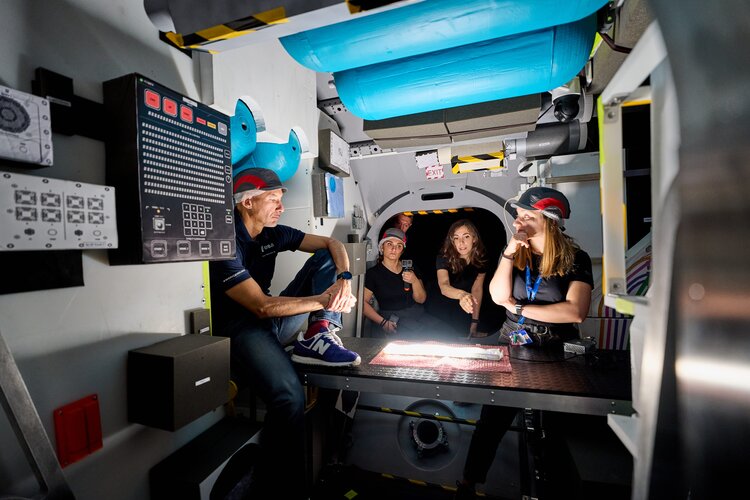
Lunar I-Hab, the next European habitat in lunar orbit as part of the Gateway, has recently undergone critical tests to explore and improve human living conditions inside the space module.
Momentus awarded DARPA contract for in-space construction technologies
 Momentus Inc. (NASDAQ: MNTS), a provider of in-space transportation services, has secured a contract from the Defense Advanced Research Projects Agency (DARPA) to support the design and in-space demonstration of technologies for constructing large-scale structures in space.
The DARPA Novel Orbital and Moon Manufacturing, Materials, and Mass-efficient Design (NOM4D) program aims to develop
Momentus Inc. (NASDAQ: MNTS), a provider of in-space transportation services, has secured a contract from the Defense Advanced Research Projects Agency (DARPA) to support the design and in-space demonstration of technologies for constructing large-scale structures in space.
The DARPA Novel Orbital and Moon Manufacturing, Materials, and Mass-efficient Design (NOM4D) program aims to develop Starling spacecraft swarm completes primary mission
 After ten months in orbit, the Starling spacecraft swarm has achieved its primary mission objectives, marking a major milestone in swarm technology.
Satellite swarms could potentially be used for deep space exploration. These autonomous networks can self-navigate, manage experiments, and adapt to environmental changes without relying on constant communication with Earth.
"The success
After ten months in orbit, the Starling spacecraft swarm has achieved its primary mission objectives, marking a major milestone in swarm technology.
Satellite swarms could potentially be used for deep space exploration. These autonomous networks can self-navigate, manage experiments, and adapt to environmental changes without relying on constant communication with Earth.
"The success Sidus Space AI Platform Achieves First Data Transmission from LizzieSat-1
 Sidus Space, Inc. (NASDAQ: SIDU) has announced that its AI delivery platform, FeatherEdge, successfully transmitted data back to Earth for the first time on May 24, 2024.
The LizzieSat-1 mission showcased FeatherEdge's capability to upload new algorithms post-launch, run a machine vision algorithm on a hardware accelerator, and downlink health and status data to the Sidus Mission Control C
Sidus Space, Inc. (NASDAQ: SIDU) has announced that its AI delivery platform, FeatherEdge, successfully transmitted data back to Earth for the first time on May 24, 2024.
The LizzieSat-1 mission showcased FeatherEdge's capability to upload new algorithms post-launch, run a machine vision algorithm on a hardware accelerator, and downlink health and status data to the Sidus Mission Control C 


